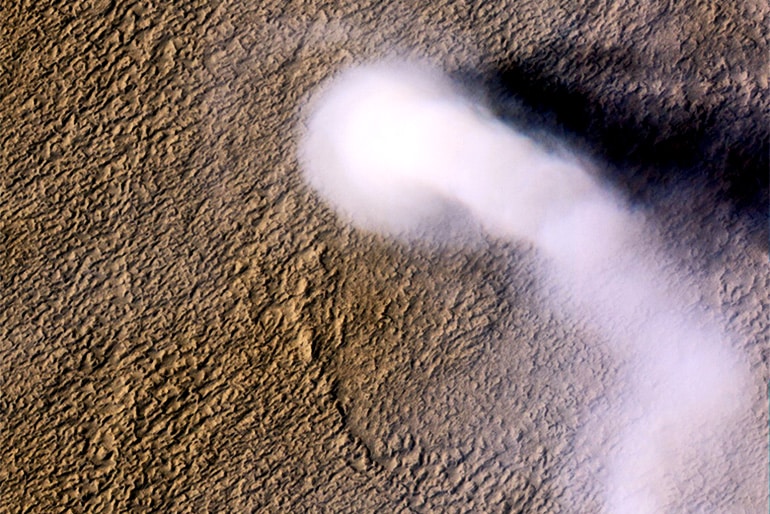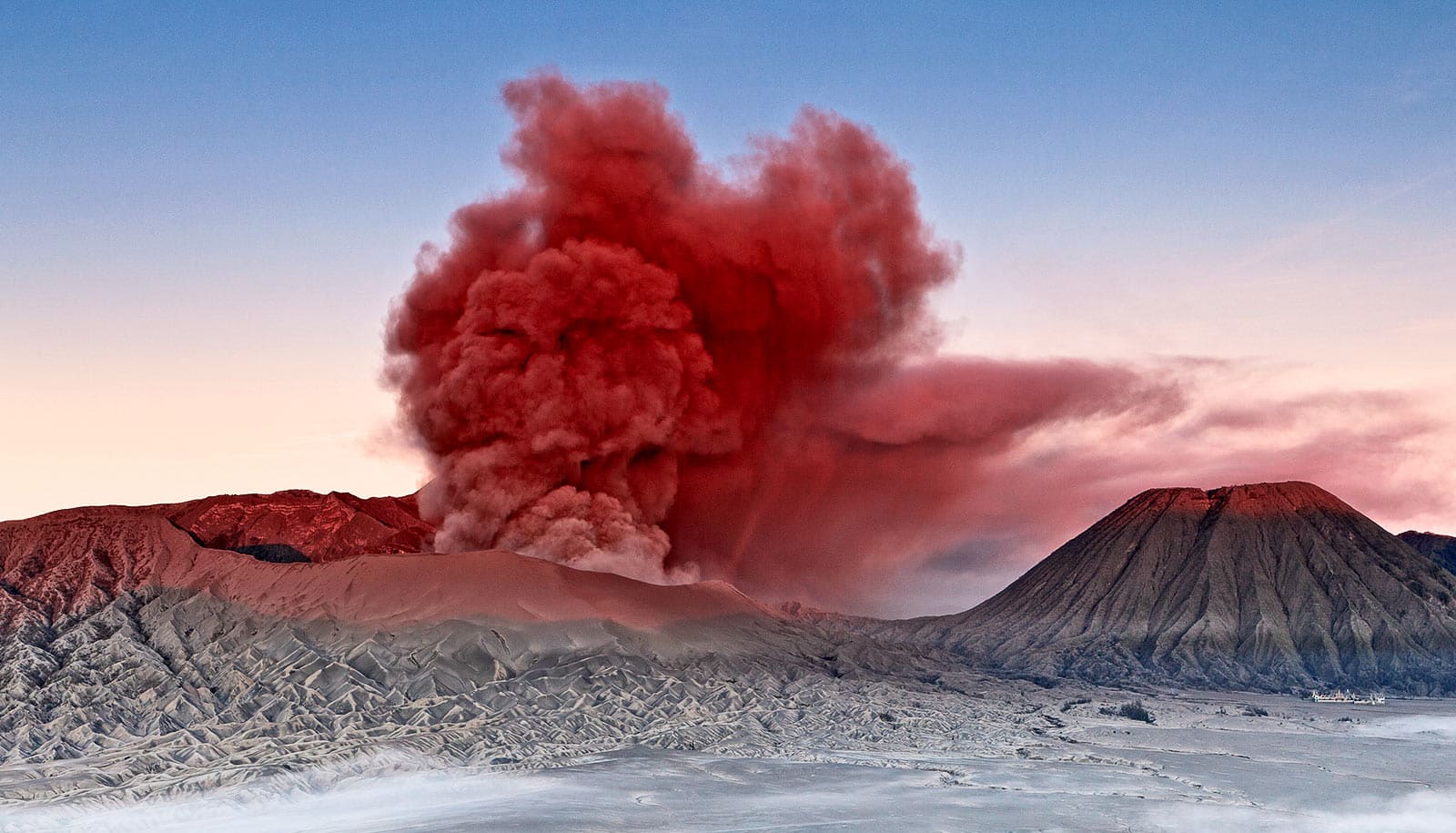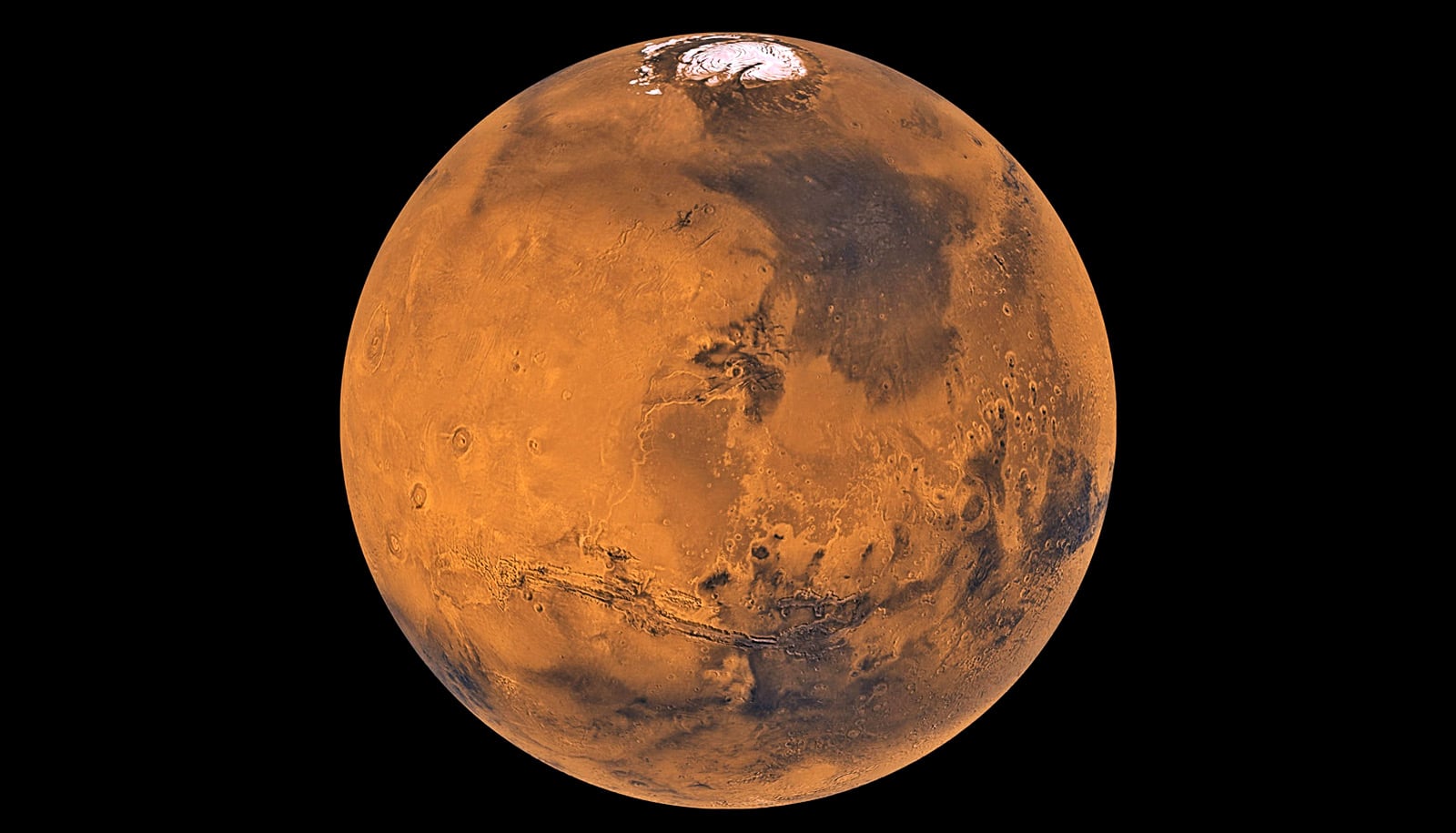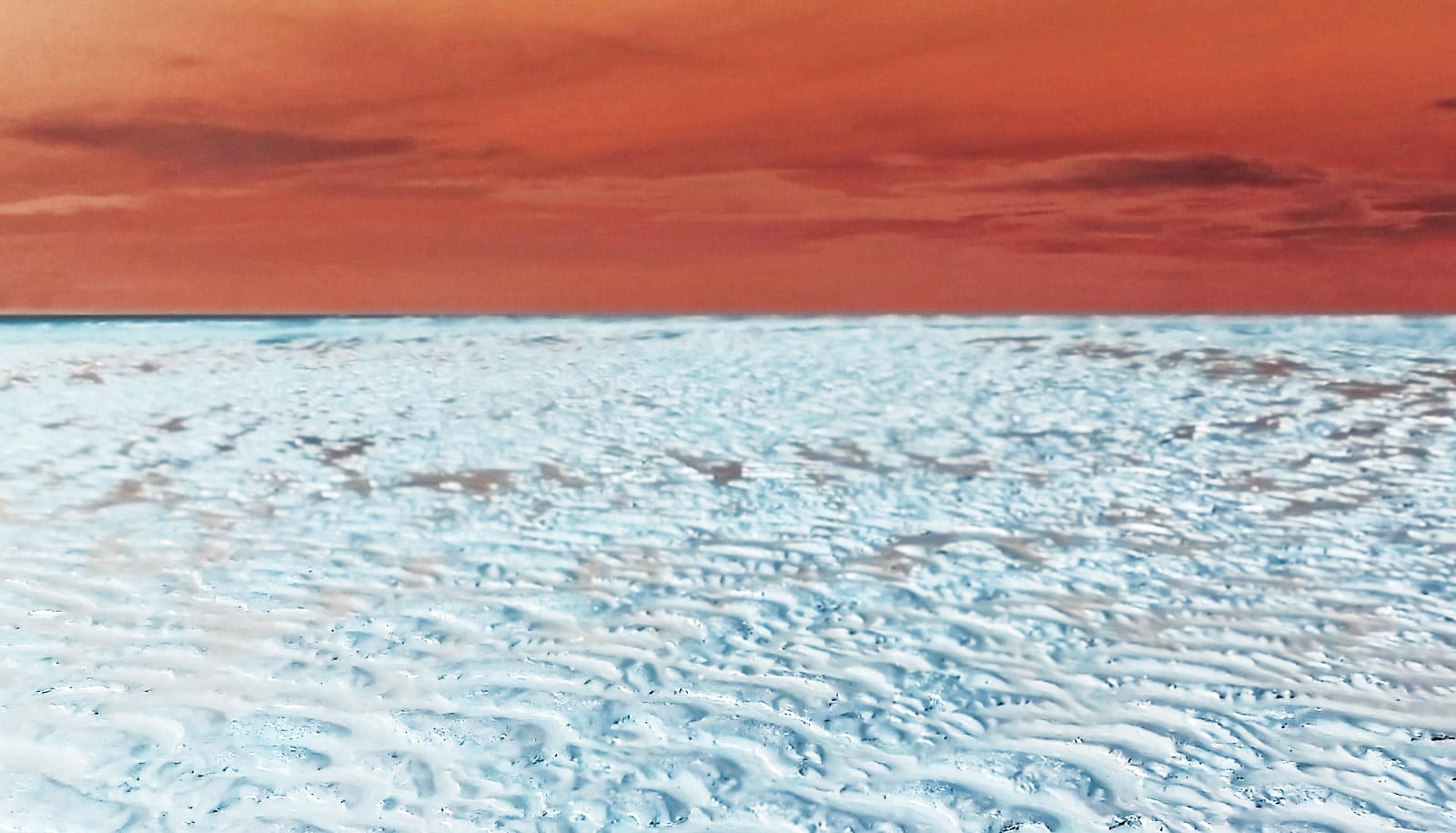The zip of electricity in Martian dust storms helps to form the huge amounts of perchlorate in the planet’s soils, according to new research.
It’s not lightning but another form of electrostatic discharge that packs the key punch in the planet-wide distribution of the reactive chemical, says study coauthor Alian Wang, a research professor in the earth and planetary sciences department at Washington University in St. Louis.
“We found a new mechanism that can be stimulated by a type of atmospheric event that’s unique to Mars and that occurs frequently, lasts a very long time, and covers large areas of the planet—that is, dust storms and dust devils,” Wang says. “It explains the unique, high concentration of an important chemical in Martian soils and that is highly significant in the search for life on Mars.”

The work, which appears in the journal Earth and Planetary Science Letters, is an experimental study that simulates Martian conditions in a laboratory chamber on Earth.
Perchlorates’ initial bad rap
When NASA’s Phoenix Mars Lander arrived on the planet in search for environments suitable for microbial life, researchers were surprised to find high concentrations of perchlorates in the soil—ranging from 0.5 to 1 percent.
A popular misconception at the time led some people to believe that perchlorates would kill all Martian microbes. In reality, some microbes are able to use perchlorates as an energy source, although perchlorates are toxic to humans.
The perchlorate ion—made of one chlorine atom and four oxygen atoms—is stable, but chlorate, a related chemical with only three oxygen atoms, is a strong oxidizer.
This new research shows that chlorate is the first and major product in the pathway of phase transitions from chloride to perchlorate during multiphase redox plasma chemistry.
Martian atmosphere on Earth
On Earth, photochemical reactions that sunlight powers form naturally occurring perchlorates. They’re rare, but they do exist: perchlorates sourced this way have been found in the soils of hyper-arid regions on Earth, such as the Atacama Desert of Chile, Antarctica’s dry valleys, or the Qaidam Basin on Tibet Plateau, for example. But Mars has about 10 million times more perchlorates in its soil than this type of photochemistry would predict alone.
Modelers suggested that lightning could provide the energy for these chemical reactions on Mars. But Wang and her fellow researchers were the first to create an actual experimental simulation that demonstrated a yield of chlorate/perchlorate that was 1,000 times the yield that photochemistry in the laboratory generated.
The researchers designed two sets of experiments using a simulator dubbed the Planetary Environment and Analysis Chamber (PEACh), creating a Mars-like atmosphere with similar pressure and temperature conditions.
In the low-density Mars-like atmosphere, which has less than one percent of the atmospheric pressure of the Earth, charged particles are less likely to accumulate at a distance to form the dramatic spiking arc of lightning. Instead, wind events carrying sand and dust are more likely to develop near-surface electric fields that result in either Townsend Dark Discharge, an effect which is not visible, or normal glow discharge—which appears, just as it sounds, as a dim glow.
“If a photo was taken in the evening without sunlight, the normal glow discharge should be seen in the form of a weak light and may last longer than lightning,” Wang says. “Actually, I have suggested to an atmospheric scientist who is working on the Curiosity rover that they should design an evening photo sequence to catch dust devils!”
In the Mars chamber in the laboratory, the research team observed the instantaneous generation of free radicals—molecules with highly reactive unpaired electrons—in normal glow discharge, detected by in situ plasma emission spectroscopy. They also measured the transition of chloride to chlorate, and then to perchlorate through interaction with the free radicals, using laser Raman spectroscopy.
Masking life on Mars?
On average, global dust storms on Mars occur once every two Martian years, while regional and local dust storms occur every year.
Wang and her team are confident that their results can be scaled up to general Mars conditions and can help researchers understand the large concentrations of these chemicals in Martian soils.
What’s more, Wang suggests, chlorates produced in large quantities during dust events could be acting as scavengers, reacting with other surface chemicals in such a way that they “clean up” the biosignatures of active microbes—masking or erasing the evidence of life on Mars.
“This study opens a door. It demonstrates the strong oxidation power of electrons in electrostatic discharge process generated by dust events,” she says. “It suggests that electrostatic discharge in Martian dust events can affect many other redox processes in the Mars atmosphere and Mars surface and subsurface, such as iron and sulphur systems as well.”
Researchers from the Institute of Space Science at Shandong University in China, NASA Goddard Space Flight Center, and Texas Tech University contributed to this work.
NASA and the McDonnell Center for the Space Sciences at Washington University funded this study.



